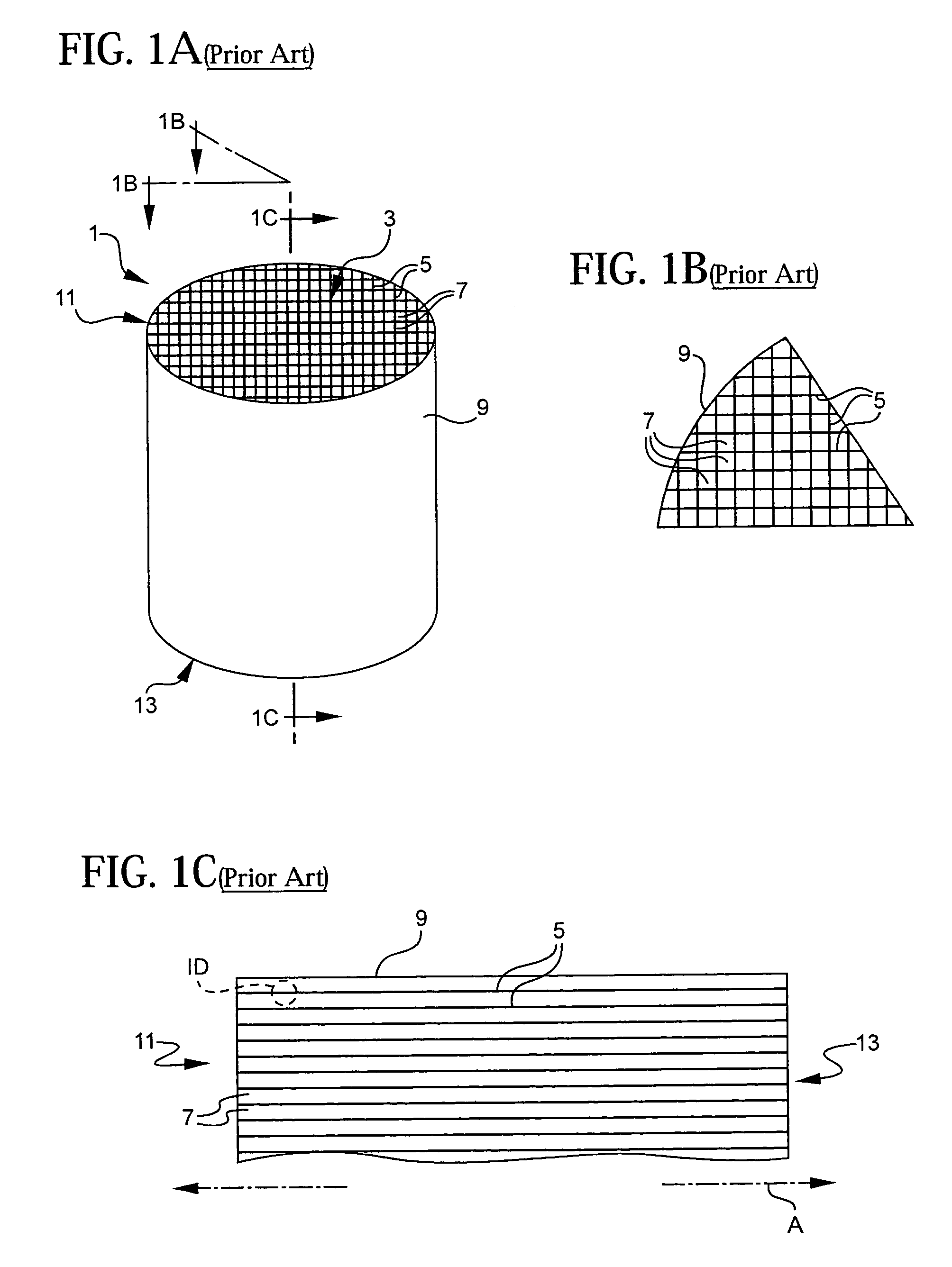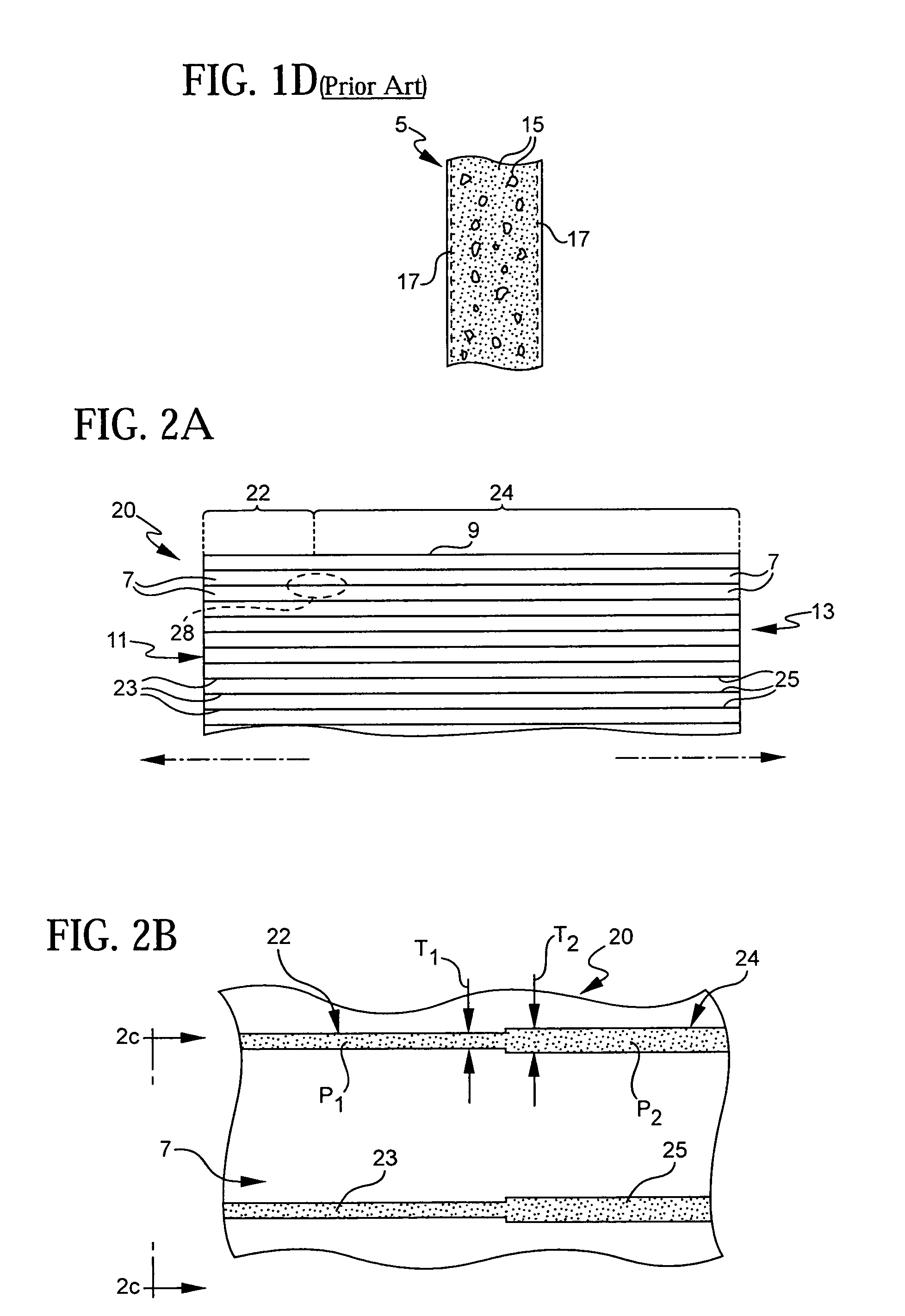Catalytic flow-through fast light off ceramic substrate and method of manufacture
a technology of ceramic substrates and flow-through ceramics, which is applied in the direction of physical/chemical process catalysts, gas-gas reaction processes, separation processes, etc., can solve the problems of increasing the time required for light off, affecting the and reducing the amount of time required. , to achieve the effect of effective catalytic effect of automotive pollutants
- Summary
- Abstract
- Description
- Claims
- Application Information
AI Technical Summary
Benefits of technology
Problems solved by technology
Method used
Image
Examples
Embodiment Construction
[0024]With reference now to FIGS. 1A through 1D, the invention is applicable to ceramic substrate 1 of the type used as automotive catalytic converters. Such substrates including network 3 of walls typically between about 2.0 and 6.0 mils thick which define a plurality of flow-through cell channels 7. While the cell channels 7 are illustrated as having a square cross-section in FIG. 1B, that may just as easily be octagonal, hexagonal or some other polygonal shape. The flow-through cell channels are typically between about 0.02 and 0.05 inches in width, and are arranged at a cell density of between about 300-900 cells per square inch. The substrate 1 further includes an extruded outer skin 9 which is typically cylindrical, and has a thickness of approximately three to four times that of the web walls 5. The resulting cylindrical structure of the substrate 1 has an inlet end 11, and an outlet end 13 which are opposed from one another along the axis A illustrated in FIG. 1C. In this ap...
PUM
| Property | Measurement | Unit |
|---|---|---|
| porosity | aaaaa | aaaaa |
| porosity | aaaaa | aaaaa |
| thick | aaaaa | aaaaa |
Abstract
Description
Claims
Application Information
 Login to View More
Login to View More - R&D
- Intellectual Property
- Life Sciences
- Materials
- Tech Scout
- Unparalleled Data Quality
- Higher Quality Content
- 60% Fewer Hallucinations
Browse by: Latest US Patents, China's latest patents, Technical Efficacy Thesaurus, Application Domain, Technology Topic, Popular Technical Reports.
© 2025 PatSnap. All rights reserved.Legal|Privacy policy|Modern Slavery Act Transparency Statement|Sitemap|About US| Contact US: help@patsnap.com



